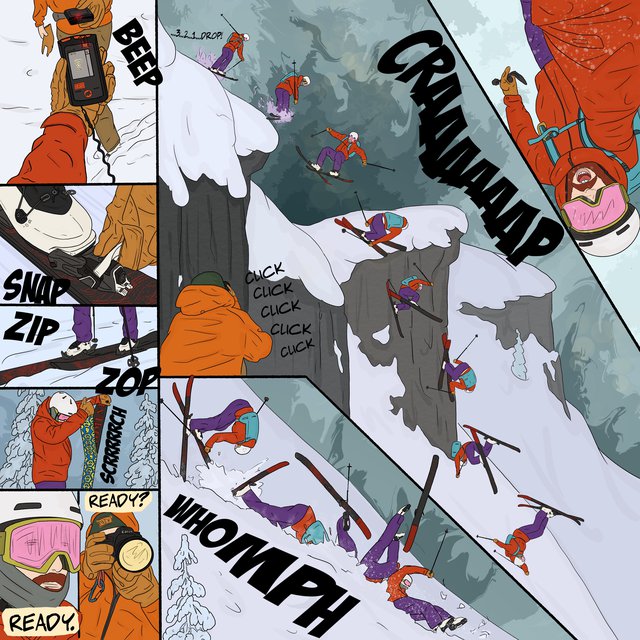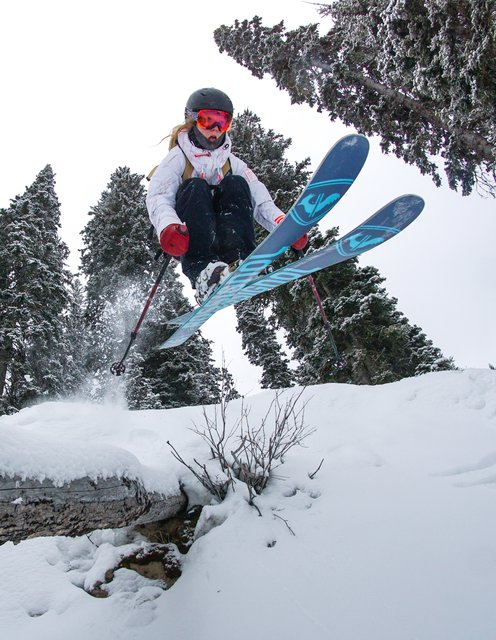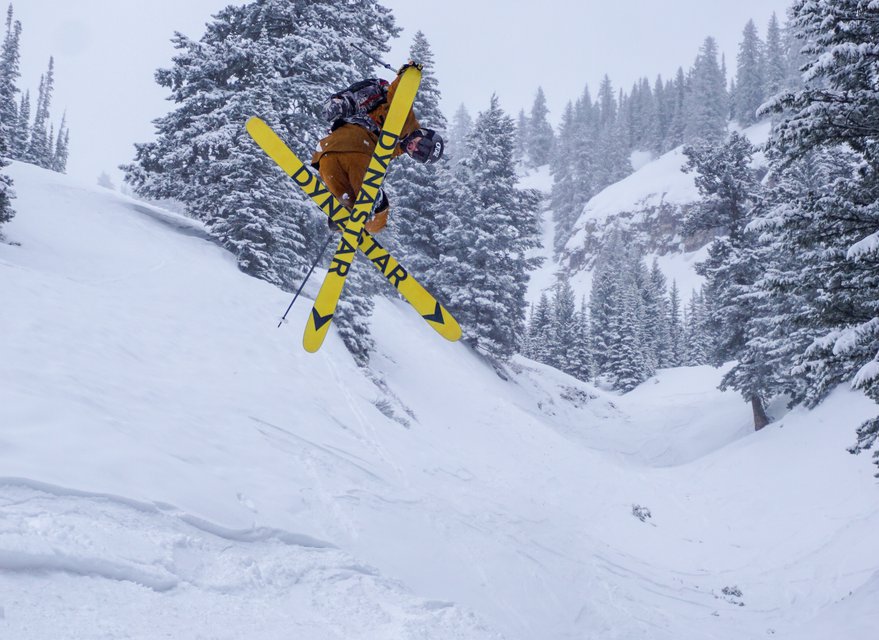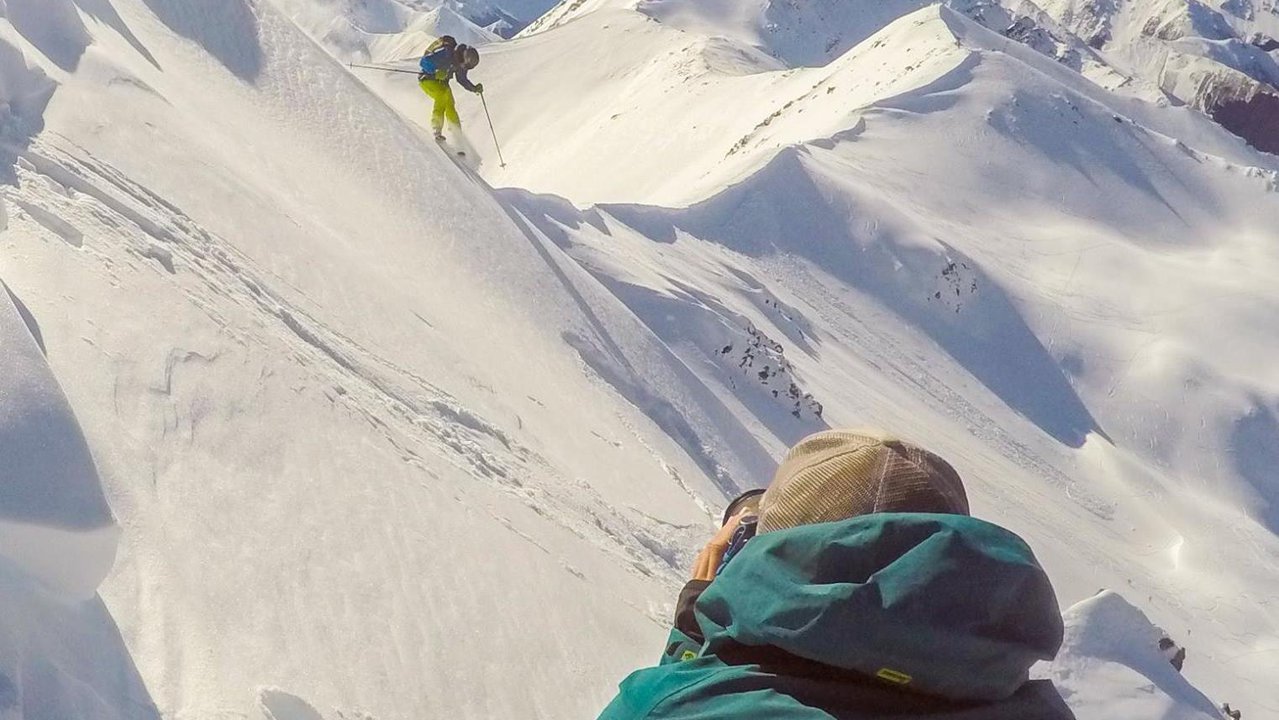While the internet is rife with resources for aspiring photographers, there’s less information out there for the folks who are on the other side of the camera. And, of course, that makes sense. At first glance it’s the photographer’s job to make a good photo, not the skier’s after all. But in my experience, the closer you can get to an equal collaboration between the skier and the athlete, the more seamless the whole process will be, and the better the outcomes will look.
While I’m not shooting ski mag covers, and I’m far from the best photographer on NS, I spent several years of my life shooting skiing as my primary job, and even though I’ve mainly transitioned to illustration, paid ski photography still makes up a big chunk of my income some months. So here are my takeaways for working with skiers, from no-names, to household ones.
Caveats
These rules mostly apply when you’re out shooting with a photographer with intent. If you’re just part of a park comp where there happen to be photographers present, this article might not do you much good. But, if you find yourself on skis, trying to make cool images with anyone from your buddy with your iPhone, to a well-known pro photog with all their kit, this article should be helpful.

And if you’re just trying to fake pow shots to up your social media clout or make your resort look cool, this isn't the guide for you. I’ve got nothing against the people who manufacture faceshots, but in my experience the process behind making those photos is drab and boring.
Communication is key
Duh. You knew that already. But, there’s more subtlety and nuance to it than just that blanket statement. So, while that three word sentence could sum up this whole article, we’ll be delving deeper into how that plays out in specific scenarios. As an overarching goal though, try to communicate specifically and succinctly with your photographer.
Dress to impress
For most photo scenarios, the first thing any viewers will notice is how you are dressed. That goes from the colors of your outerwear to the specifics of your accessories. I know, it’s super core to just wear black, but unless you’re ripping huge AK lines, or going for the “guy in the sky” look, wearing black makes your photographer’s job a lot harder. Khaki and camo pop well, are those colors core enough for you? At the very least try to have something not black (or white) to create visual interest. That can be as simple as a bright buff, or gloves. But all black everything makes most photographers sad.
Beyond that, be mindful of what you’re wearing and how it will look on camera. Make sure you’re happy with how your gear rests on your body. It sucks to have a shot ruined because your gaper gap is huge and distracting, or you put your skis on the wrong feet and the graphic doesn’t line up. You have control over the details, you might as well get them right. If you’re vain enough to get your picture taken skiing, you should also be vain enough to look in a mirror, or look at a test shot to make sure you won’t be embarrassed by your ‘fit.
The same goes for any sponsor gear. If you’re trying to produce content for a brand, make sure their logos are visible, and that you’re wearing everything they sent you. They want dynamic shots that highlight their gear. Not just shots where you look really cool but no one can tell what you’re wearing.
This is a small thing, and somewhat silly, but if you’re shooting pow shots, it pays to be wearing a backpack. Deep snow photos are generally more commercially viable for more brands and outlets if they can be construed to be backcountry skiing. Some mags just won’t run a photo of a skier without a backpack because of their desire to promote the use of avalanche rescue gear.
Spin (less) to win
This one should be obvious, but some folks are still shocked when it’s pointed out to them. It’s impossible to tell from a photo whether someone spun 1080, or just 180. And, from a photographer’s perspective, lower rotations usually provide more usable frames where the skier’s face is visible, they look in control, and are getting the grab. It can be very frustrating when you’re just shooting photos, no video, and the frame where the skier is at the apex of their air looks wild and out of control because they’re trying to throw a big spin that they don’t have dialed. 180’s and 360’s are easy to anticipate, and easy to shoot well. Getting a clean, tweaked grab is much more important than adding an extra rotation.
My favorite rotations to shoot are 180’s, 360’s, backflips, superman fronts, and flat 360’s. If you can do one of those tricks, with clean style, at a decent amplitude, you can get some great photos. That’s all it takes.
The same goes for rails. Switchups rarely look good in photos. Instead, a big disaster with a grab, or a solid press will get you many more points with your photographer. Slow down the action, and give the photographer as many seconds where you look composed and in control as possible.
Get your best face forward
Piggybacking off of that, communicate with your photographer about where they’ll be shooting from, and which direction they want you to spin. Much of the time, the goal is to align three things: the apex of the trick, the skier’s face, and the grab. They’re trying to grab a shot where you’re tweaking the grab, you’re at your highest point in the air, and you’re facing them. Again, this is where style and control are paramount. If you can do a left 1440 but can only spin a right 180 with a solid grab, and the photographer is shooting from the right side, chances are that 180 is going to get you a much better shot. And, with a 180, you can float it out so that you’re facing the photographer almost the entire time you’re in the air. That pays off. Flashing some base is a bonus. Bases usually pop well, and seeing the bottom of your skis makes it seem like you’re going bigger.

This was a weird, kind of crappy side hit and Erin Spong did a great job of serving face, and staying composed to make the most of it. It's far from my best work as a photographer, but it's a great example of the skier making something worthwhile happen.
Finally, if you’re not spinning, if you’re just straight airing a big cliff or something, make sure your hand position is dialed. Your goal is to give the photographer as many frames as possible where it doesn’t look like you’re rolling down the windows. So keep your hands forward and low. You can reach for a grab if that helps, or even throw a small shifty, anything to keep those hands composed.
Get weird with less typical tricks
Stalls, taps, and hand drags might not win you a slopestyle comp, but they make for great photos. Often, the goal when shooting is to get a shot of the skier “interacting” with a feature. And, while the obvious ways to do that are to have them jump over it, or grind it, mixing things up can really pay off. Hand drags and plants especially give the photographer something really dynamic to work with, you can shoot them well with a variety of focal lengths, and they can give your shots an aura of suspended intensity.
Collaborate on storytelling
I know, the term “storytelling” is overused, but that is literally what you’re doing. The story might be as simple as “they took off over there, did a shifty, and landed over here” but that’s still a story with a distinct introduction, climax, and ending. This is why “guy in the sky” photos suck. They’re a climactic moment without any context.

Both the snow, and the light on this day really sucked, but Sander Hadley managed to get me the holy trinity of bases, face, and grab off this crappy side hit. I'll take it! Like the shot above, I'm not wildly fond of this shot from an artistic perspective, but Sander is great at making something worthwhile happen even when the conditions are adverse.
So talk to your photographer about what context they’re trying to include, and work around it. Your resort has a great view of a lake? Figure out a trick that looks good from an angle that highlights that. Got a side hit near a lift? Time it so that you can have a lift full of stoked homies in the shot. Any sort of added visual interest adds to the shot’s overall story. Work with the photographer’s vision, and help them by bringing your own understanding to the table.
Learn to see like the camera
Some skiers like to just ski how they always ski, and hope the photographer gets something cool. But it really pays off to learn how to see with the camera. Ask your shooter what focal length they’re shooting at, how tight they’re shooting you. That will determine the tricks you do, and how they read. When a photographer asks you to make a turn in front of them, ask them to throw a snowball, and then aim for that area.
Be precise with your language
This goes for both parties. Always be precise with your language. Decide whether you’ll be using the photographer’s or the skier’s point of view as reference, and then stick to that, and clearly let them know when you deviate from that. “Right” or “Left” is not enough. “Skier’s left, and “Lookers left” are opposite directions. Some folks like to talk about turns in terms of what foot is initiating them. That's fine, but make sure you're all on the same page on the lift.
Spins are always called in the skier’s direction. Make sure you’re in agreement with what you mean. Otherwise you’ll be left yelling fruitlessly at each other across the hill. So many shots are ruined by a “I’ll just ski down there and try to do something cool” attitude, when all it would take is either the skier or photographer saying something like, “does a left 180 Japan work for you?”
Be Efficient
Shooting photos is rarely as fun as skiing for yourself. So try to move quickly and with purpose. Make plans fast, and then try to execute them faster. If they don’t work the first time around, immediately reevaluate and try them again next run. Some photographers are maestros who have one very striking image in mind, and it makes sense for them to work all day to get that one shot. But for most of us, we’re trying to get a variety of good shots that showcase a range of tricks and locations. That’s what many brands want, and it makes sense. So move fast, shoot a bunch of features and tricks, learning along the way what angles and ideas are and aren’t working.
Conclusion
Shooting ski photos can be very rewarding, not just for the photographer, but for the subject as well. A little planning and communication goes a long way when it comes time to try to make your skiing look cool.


Comments